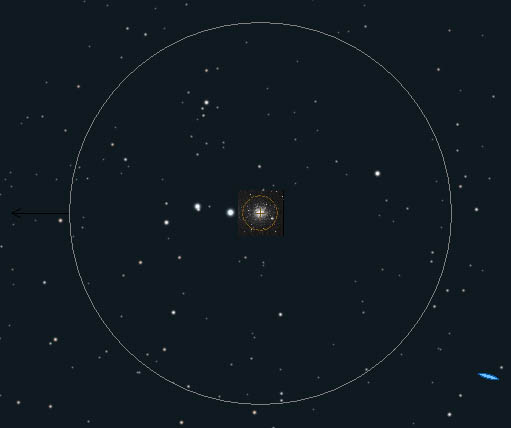|
NGC 2419 is a small
globular cluster in Lynx. It lies some 200,000 light years away,
which accounts for how small and faint it is. It is some ten times
farther away than the famous M13, for instance. To add another
perspective, this cluster lies nearly twice as far away from the
galactic center as the Large Magellanic Cloud! The vast majority of
globulars lie less than 1/3 as far out.
This may be the most distant Milky Way
globular visible in amateur instruments.

This image from the DSS shows a 20' x 20' field.
North is down and east is to the right.
NGC 2419 was discovered by William Herschel in
1788. He and later observers failed to note its globular nature. In
smaller (<10-inch) telescopes it appears as a small, round hazy
ball. Larger apertures begin to resolve individual stars.
It is an easy find because two 7th magnitude
stars (visible in most finders) point directly at it. In
my 18-inch it appeared as a round haze at 100x. My best view was at
425x, where many individual stars were resolved.

The field in a 6-inch at 50x.
|